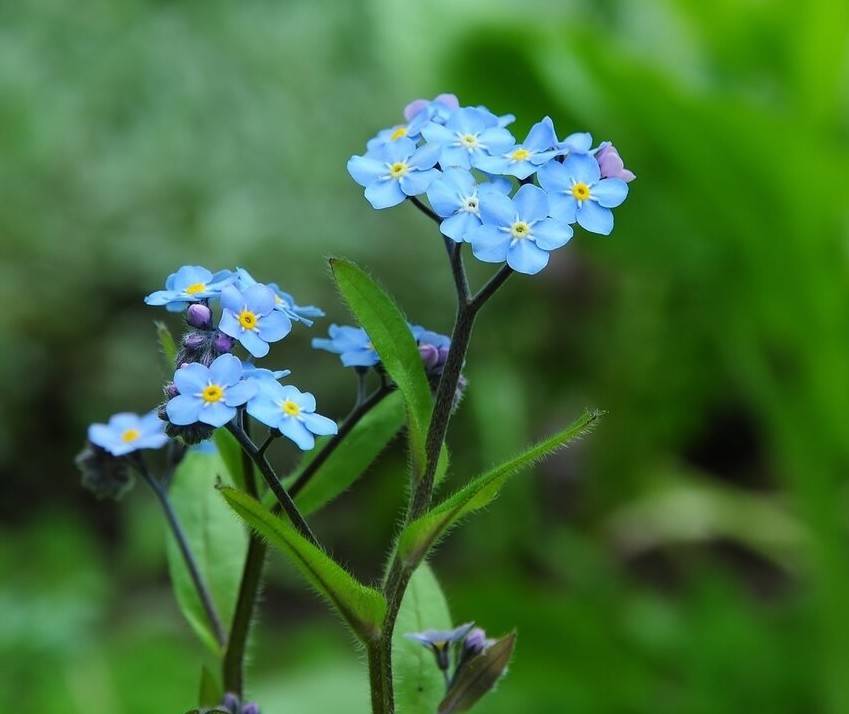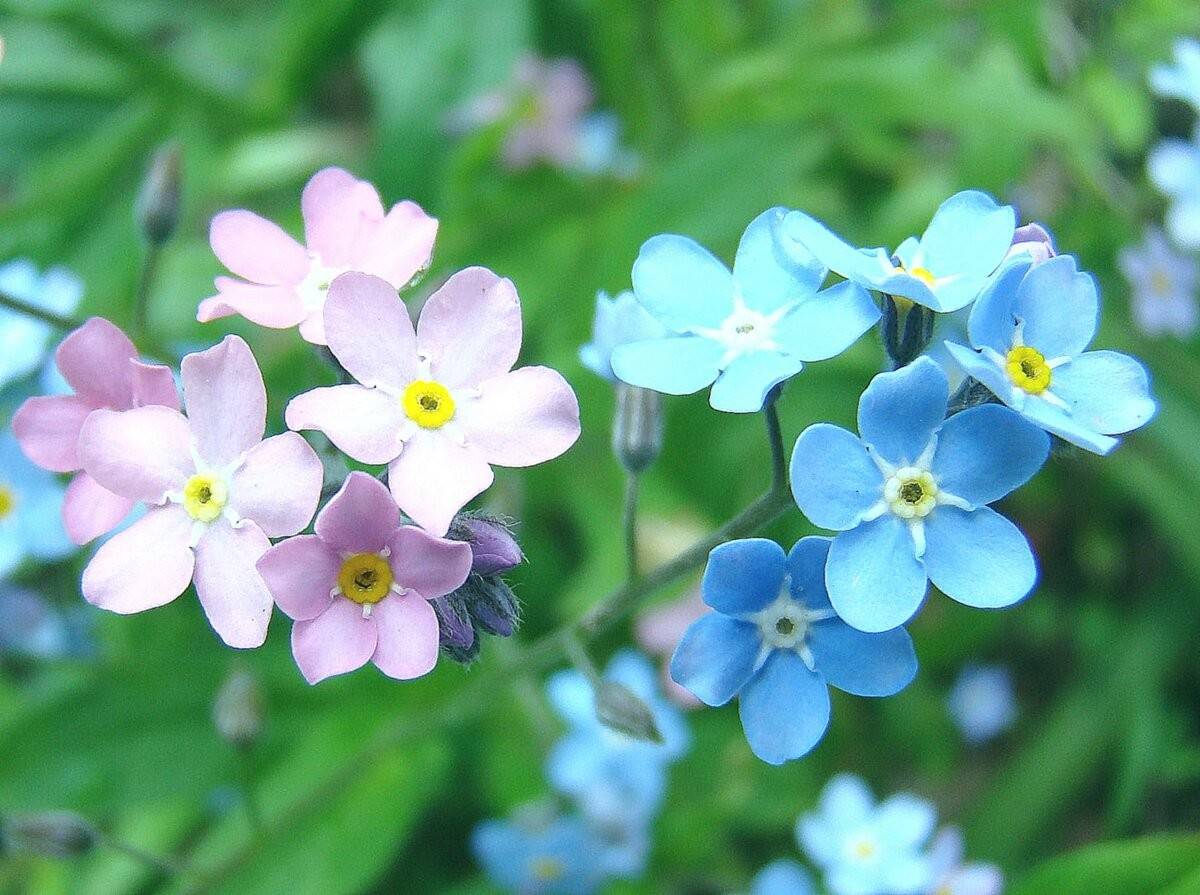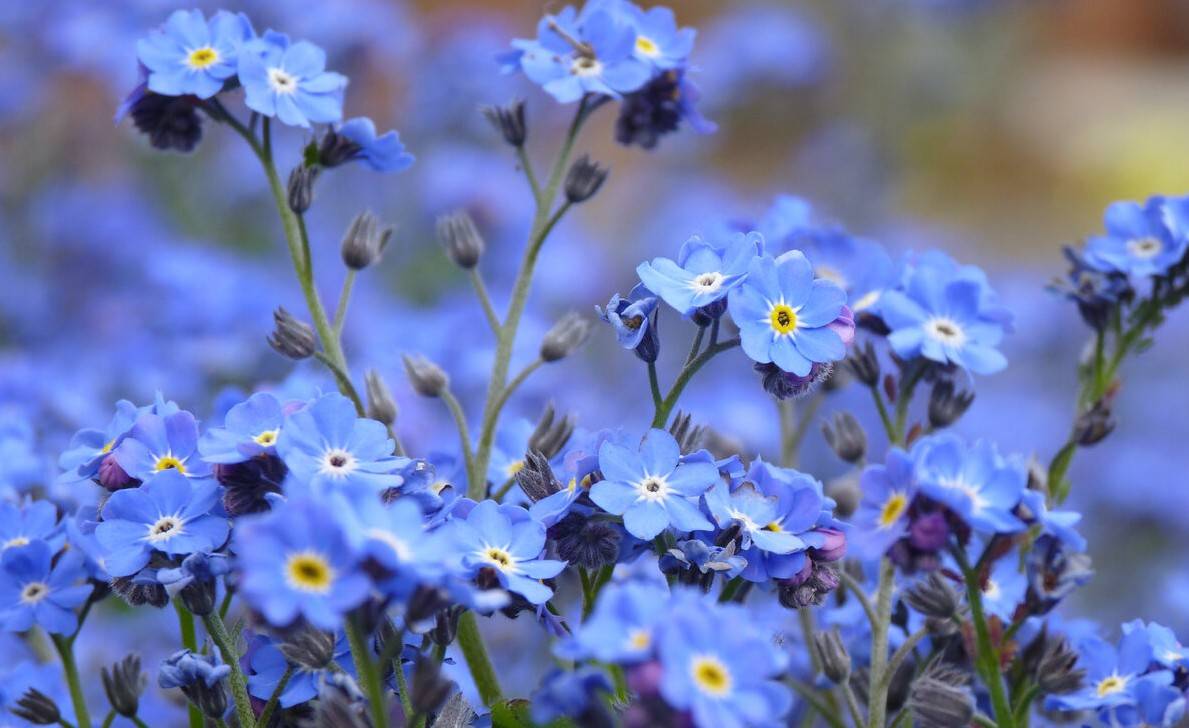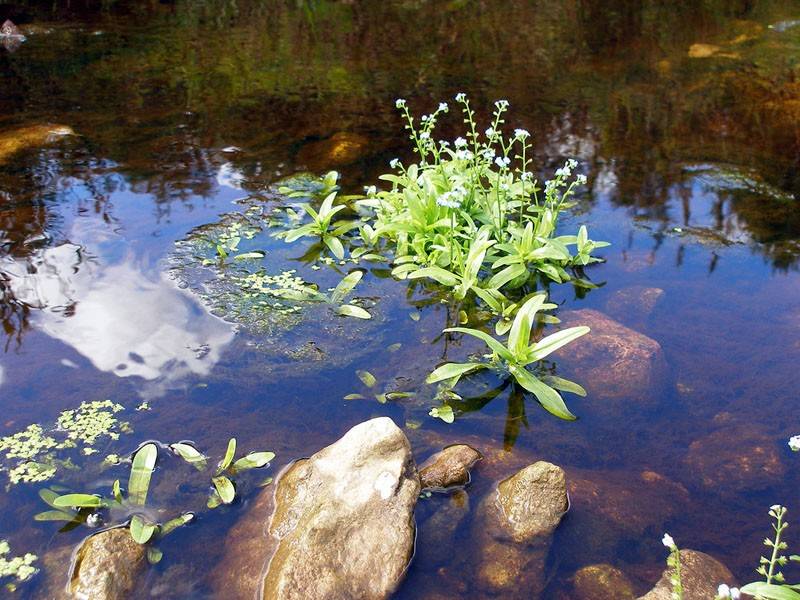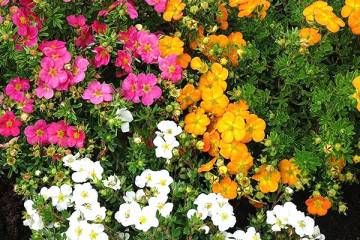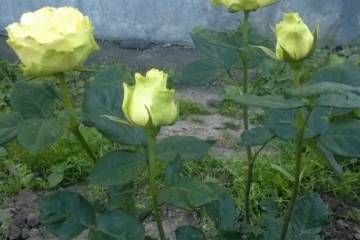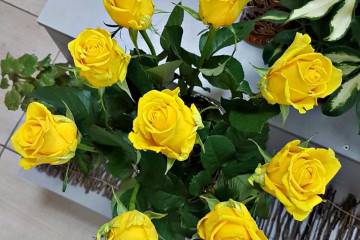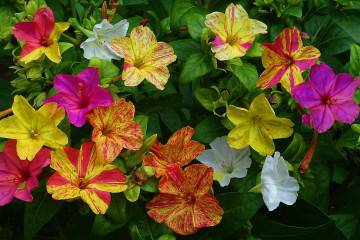Forget-me-not flower - description and characteristics of the plant
Content:
Forget-me-not is a perennial or annual flower that grows on all continents except Africa. In the wild, it is often found in swamps and along river banks. Cultivated as a garden plant, it often becomes a decoration of small reservoirs. It is worth talking in more detail about where forget-me-nots grow and how to care for them.
What does a forget-me-not flower look like?
Forget-me-nots - flowers are delicate and unpretentious, belong to the Burachnikov family. Often these are undersized or medium-sized plants with a height of 5 to 35-40 cm. They are used to decorate gardens and flower beds, and are used instead of a regular lawn.
Forget-me-not is popular among gardeners due to:
- a variety of coloring buds. You can plant blue, pink, white and lilac flowers nearby - you get a wonderful multi-colored carpet;
- branchy stems, thanks to which it seems that every centimeter of the garden is covered with flowers.
The leaves are green, can have a lanceolate, linear or scapular shape. In inflorescences, the form is racemose. In place of the faded bud, a box with seeds is formed. There are many of them and they are very small.
Why is forget-me-not called that
It is interesting that the inhabitants of many countries of the world, when they see a flower, pronounce a word with the same meaning, which fully corresponds to its description. From Latin its name can be translated as "mouse ear". Also, the plant is called a gourd, feverish herb or pristine.
According to legend, Flora, walking on the ground and giving names to everyone, did not notice the small plant. It was very scared that it would remain without a name, so it spoke. The goddess heard that the flower was calling her, repeating: "Do not forget me." She was surprised and decided to call him “Forget-me-not”.
When forget-me-nots bloom
Blooms in late May and early June. Flowering is long, on average it lasts up to 40 days, while the flower bed is never left without flowers, new buds quickly replace the faded ones.
Types and varieties of forget-me-nots
In Russia, about 35 out of 61 species grow, not counting the hybrid ones. Each of them finds application in landscape design. Knowing when forget-me-nots bloom, you can make magical meadows in the garden.
Forget-me-not marsh
It can be found on the banks of almost every body of water. Stems are green, branched, up to 30 cm high. Leaves are lanceolate, flowers are small, no more than 1.5 cm in diameter, delicate blue color. A hybrid of the swamp forget-me-not is Semperflorens. Forget-me-not marsh differs from others in the presence of bright buds, which are blue and yellow core.
Forget-me-not field
Herbaceous plant, lives in one place for 1-2 years. It is grown to obtain raw materials from which drugs are further prepared. The flower is quite tall, about 40-60 cm in height.The stem is straight, pubescent. Small pale blue flowers up to 2-3 mm in diameter are collected in loose racemose inflorescences. Blooms in May and blooms until September.
Forget-me-not creeping
Not cultivated. The appearance depends on the conditions in which the flower grows. Creeping forget-me-nots growing in the swamp have branchy stems stretching 40-45 cm in height. The flowers are light, sky blue, the core is yellow. It blooms in summer, more often in June.
Forget-me-not forest
Biennial or perennial. The color of the buds depends on the variety. There are pink, white and blue forest dwellers. The stem is pubescent, branches, extends to a height of 30-40 cm. The flowers are small, up to 1 cm in diameter, the stem usually ends with a lush raceme or curl of 5-6 buds.
Alpine forget-me-not
Prefers stony soil, is the main cultivation for hybrid varieties. The stems of the plant are small, the plant is low - about 10-15 cm in height. The buds are blue, flowering lasts 25-40 days.
Forget-me-not pink
This perennial prefers moist soil and partial shade. The buds are dark pink. Suitable for growing in regions where droughts in summer and frosts in winter are common. Differs in considerable endurance.
Forget-me-not white
A subspecies of Alpine forget-me-not. Snow-white buds, early spring bloom.
Forget-me-not ordinary
Actually a wild-growing forget-me-not. Prefers swampy and fertile soils.
Meadow forget-me-not
Another name for field forget-me-not or forest. The characteristics are completely the same.
You can grow wild types of forget-me-nots in the garden
Any plant species, including those growing in the wild, can be grown in a flower bed. To do this, it is enough to transplant perennials from the usual soil into the garden one. This should be done in the fall. It is advisable to take more planting material. The risk of death of some of the plants is quite high. Annuals are propagated by seed.
Forget-me-not garden perennial: varieties and types
Perennial hybrid plant varieties have been developed especially for gardeners.
Forget-me-not small-flowered
An annual flower, the height of the stem of which does not exceed 5-15 cm. The flowers are colored blue, the stem is erect. The diameter of the buds is 2-4 mm.
Forget-me-not rare-flowering
A perennial native to the Alpine mountains. The rare-flowered forget-me-nots have large buds, there is a wide variety of colors, but most often the flowers are dark blue, pink and white. It has been cultivated since the end of the 19th century.
The Alpine garden variety and its hybrids are most popular with florists:
- Indigo;
- Carmen King;
- Miro;
- Rosilva.
When buying seeds, you should focus on the flowering period and stem height, the period of growing in one place. It is also necessary to consider which variety is best combined with other plants that decorate the meadow lawn.
Planting forget-me-nots in open ground
The flower is grown in the open field. Seeds or ready-made seedlings are used as planting material.
Seeds are sown in a greenhouse in May or June. Seed germination lasts until August. In early September, seedlings are transplanted into open ground, but this is done only with perennial flowers. Annuals are sown at the end of April and bloom in June. Planting holes should not be deep - no more than 1-2 cm, the distance between them is 25-30 cm.
Growing forget-me-not seedlings
Seedlings are planted in the ground in the fall, but it is also possible in the spring, only in the latter case, the buds should already be ready for flowering on the stems.If the flowers are planted in autumn, the ground is mulched with peat, watered abundantly, and covered with pine branches in frosts. A properly planted planting allows you to enjoy beautiful flowers as early as early May.
The place for planting should be chosen depending on the type of plant. Flowers that grow wild in the swamp will die on well-lit hills, and sunshine lovers such as Alpine forget-me-not will not last long in a shaded area.
The abundance of flowers and ovaries depends on the fertility of the soil. In the fall, mineral fertilizers are applied to the soil, and in the spring, peat and humus.
The main methods of breeding
The plant propagates by seed. You can also try dividing a bush or growing young seedlings from cuttings.
Reproduction by dividing the bush
The plant has a strong root system. Roots that have grown together, from which many stems depart, simply divide and transplant the resulting bushes to a new place. Water abundantly during the week.
Propagation by cuttings
Varietal species are best propagated by cuttings. To do this, the stem is cut into several parts, about 5-7 cm each. Germinated in a growth stimulator, planted together with seedlings grown from seeds.
Possible diseases and pests
The plant is rarely sick, mainly the cause of the disease is improper care. Too frequent watering, lack of light and heat lead to the appearance of powdery mildew and root rot.
Some species are affected by gray rot. Copper oxychloride is used to combat it. Aphids that have passed from other garden plants are destroyed with soapy water and various insecticides.
Use cases in landscape
Forget-me-nots have a special role in landscape design. European designers combine them with blooming tulips and daffodils. This allows you to highlight the named plants from the total mass, to emphasize their beauty. If there is a reservoir on the site, then marsh species are planted around it.
Alpine slides are also not complete without this flower. It is planted instead of the annoying lawn and in order to hide some flaws in the garden.
Forget-me-not is very often used to decorate gardens and ponds, city flower beds and parks. The variety of species allows you to successfully use the flower for solving various design problems for arranging garden plots.
